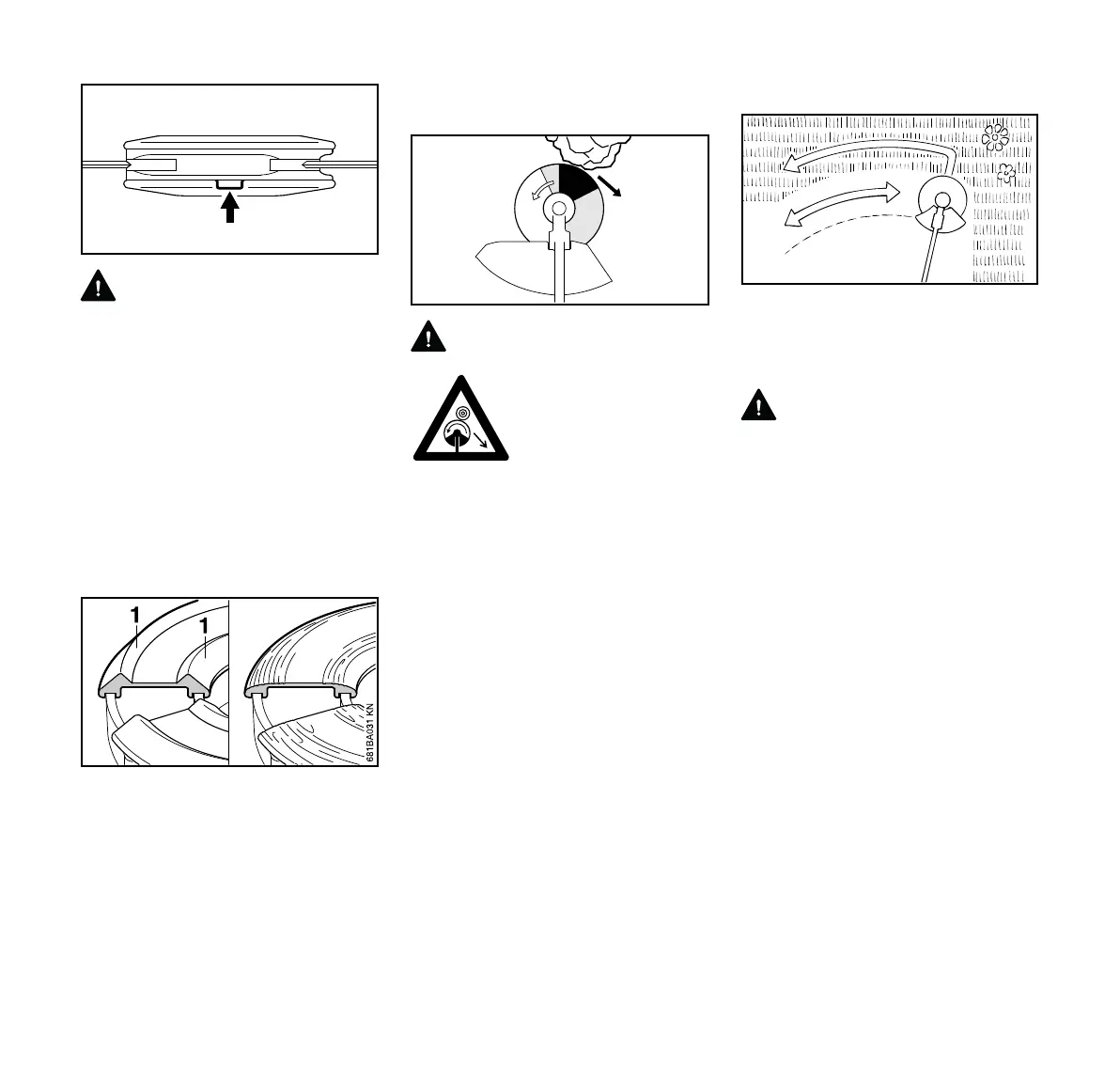FS 131, FS 131 R
English
13
WARNING
Three rectangular wear limit marks are
applied to the base (periphery) of the
PolyCut. To reduce the risk of serious
injury from breakage of the head or
blades, the PolyCut must not be used
when it has worn as far as one of these
marks. It is important to follow the
maintenance instructions supplied with
the head.
STIHL FixCut mowing head
Uses pre-cut lengths of nylon line.
Observe wear indicators.
Do not continue using the mowing head
if the raised moldings (1) on the base
are missing or worn – see right
illustration above. The mowing head
may otherwise shatter and flying objects
could result in injury to the operator or
bystanders. Install a new mowing head.
Risk of Kickout (Blade Thrust) with all
Rigid Cutting Blades
WARNING
This kickout (blade thrust) may cause
loss of control of the power tool and may
result in serious or fatal injury to the
operator or bystanders. To reduce the
risk of injury, extreme caution should be
used when cutting with the shaded area
of any rigid blade.
Using the Grass Cutting Blade
All kinds of grass and weeds can be
easily cut with the grass cutting blade.
The power tool is swept in an arc similar
to a scythe.
WARNING
To reduce the risk of serious or fatal
injury from blade breakage, never
attempt to use this blade to cut woody
materials.
The 4-tooth grass cutting blade is
intended to cut grass and weeds. It has
4 cutting knives with cutting edges on
both sides, i.e. front and rear. When the
cutting edges on one side become dull,
the blade can be turned over to utilize
the cutting edges on the other side.
The 8-tooth grass cutting blade is
recommended for cutting fern or reed.
Both types of grass cutting blade have to
be resharpened when all cutting edges
are dull.
Using the Brush Knife
When fitted to the power tool, the brush
knife is suitable for applications ranging
from cutting matted grass to clearing
weeds, wild growth and scrub.
Kickout (blade thrust) is
the sudden and uncon
-
trolled motion towards
the operator's right or
rear that can occur when
the shaded area (espe
-
cially the darkly shaded
area) of a rotating blade
comes in contact with a
solid rigid object like a
tree, rock, bush or wall.
The rapid counterclock
-
wise rotation of the blade
may be stopped or
slowed, and the cutting
attachment may be
thrown to the right or to
the rear.

